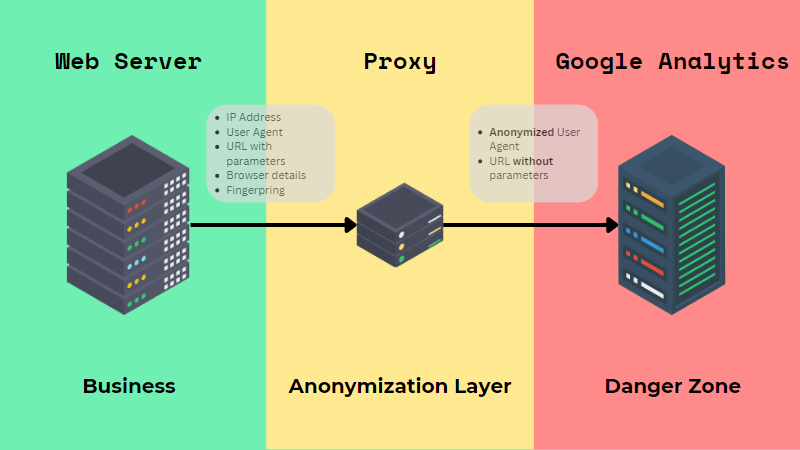Recognizing the Regulations: What Data Does Google Analytics Prohibit Collecting?
Recognizing the Regulations: What Data Does Google Analytics Prohibit Collecting?
Blog Article
Mastering the Art of Conquering Information Collection Limitations in Google Analytics for Better Decision-Making
In the realm of electronic analytics, the ability to remove meaningful insights from information is paramount for informed decision-making. By utilizing critical strategies and advanced techniques, organizations can elevate their data high quality, unlock hidden insights, and pave the method for more educated and effective choices.
Data Top Quality Evaluation
Evaluating the quality of data within Google Analytics is a crucial action in making certain the reliability and accuracy of understandings stemmed from the collected information. Information quality evaluation includes evaluating various aspects such as precision, efficiency, consistency, and timeliness of the information. One crucial element to think about is information precision, which describes exactly how well the information mirrors the real values of the metrics being measured. Imprecise data can bring about faulty final thoughts and illinformed company decisions.
Completeness of data is one more important variable in analyzing information high quality. Consistency checks are additionally crucial in data high quality evaluation to recognize any kind of discrepancies or anomalies within the data set. By prioritizing information high quality assessment in Google Analytics, companies can boost the reliability of their analytics records and make even more educated decisions based on precise understandings.
Advanced Monitoring Techniques
Using innovative monitoring techniques in Google Analytics can considerably improve the deepness and granularity of information gathered for even more comprehensive analysis and insights. One such method is event tracking, which enables for the monitoring of certain communications on a website, like clicks on switches, downloads of documents, or video views. By carrying out event monitoring, companies can obtain a deeper understanding of individual actions and interaction with their on the internet web content.
In addition, custom-made dimensions and metrics offer a means to customize Google Analytics to details company demands. Personalized measurements enable for the development of brand-new information factors, such as individual duties or client segments, while custom-made metrics allow the monitoring of distinct performance signs, like profits per user or ordinary order worth.
Additionally, the usage of Google Tag Manager can enhance the application of tracking codes and tags throughout a web site, making it simpler to take care of and release innovative monitoring arrangements. By taking advantage of these sophisticated monitoring strategies, services can unlock important insights and optimize their on-line methods for far better decision-making.
Custom Measurement Application
To boost the depth of data accumulated in Google Analytics beyond sophisticated tracking methods like occasion tracking, businesses can implement personalized measurements for more customized understandings. Personalized measurements permit organizations to specify and accumulate particular information factors that relate to their unique objectives and goals (What Data Does Google Analytics Prohibit Collecting?). By designating custom-made dimensions to different components on a web site, such as user interactions, demographics, or session details, services can gain a much more granular understanding of just how individuals involve with their online residential properties

Attribution Modeling Strategies
Efficient acknowledgment modeling is important for comprehending the effect of numerous marketing channels on conversion courses. By employing the appropriate attribution design, businesses can precisely associate conversions to the appropriate touchpoints along the client journey. One common attribution design is the Last Interaction version, which provides credit rating for a conversion to the last touchpoint a customer engaged with prior to transforming. While this model is simple and easy to implement, it typically oversimplifies the consumer journey, ignoring the influence of various other touchpoints that added to the conversion.

Information Sampling Avoidance
When dealing with huge volumes of information in Google Analytics, getting over information sampling is essential to make certain precise insights are acquired for notified decision-making. Data tasting happens when Google Analytics approximates patterns in data instead than examining the complete dataset, possibly leading to skewed results. By taking these proactive actions to lessen data tasting, businesses can extract extra precise understandings from Google Analytics, leading to much better decision-making and improved general efficiency.
Final Thought
Finally, understanding the art of conquering information collection limitations in Google Analytics is critical for making notified choices. By conducting a thorough information quality evaluation, content applying advanced tracking strategies, utilizing custom-made measurements, employing acknowledgment modeling strategies, and preventing information tasting, companies can ensure that they have accurate and trusted information to base their decisions on. This will ultimately cause more efficient strategies and better results look at this now for the company.

Report this page